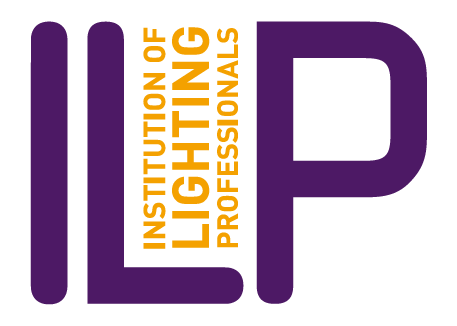For the first How To Be Brilliant of the autumn, SEAM Design’s Marci Song discussed how to craft a build environment legacy as a lighting designer – through your work, your vision, and your attention to detail.
How can lighting create a lasting impact in the spaces we inhabit? How, too, can lighting designers through their work and craft, create – and leave – a built environment legacy that truly resonates – one that endures long after the project handover?
These questions were at the heart of a thoughtful and thought-provoking How To Be Brilliant lecture for the ILP in September by Marci Song, founding director at architectural lighting design practice SEAM Design.
Her talk arrived at a time when the profession is facing rapid change – from climate pressures to AI disruption – making the idea of legacy feel more relevant than ever.
The talk kicked off what will be a busy autumn programme of How To Be Brilliant. It brought together designers, lighting professionals and students at the Lutron Experience Centre in London. Lutron is generously sponsoring this year’s programme of talks, enabling them to remain free to attend.
STORY-TELLING THROUGH LIGHT
In a wide-ranging talk that traced her path into lighting design, her influences and her approach to projects, Marci reflected on the power of light as both craft and language – a way of telling stories through space. For her, light is medium that connects people to a place and gives architecture its emotional resonance.
She also spoke candidly about the challenges and anxieties that designers can face – from sustainability and value to the speed of change – how these can sharpen rather than hinder creativity. At the heart of her message was the idea of ‘legacy’ in lighting design: the question of what remains when the drawings are archived and the lights are switched on. Or, as Marci put it: ‘What we as designers leave behind.’
Reflecting on her own journey, Marci told her audience: ‘As I get into, and beyond, my mid-life, I’ve been thinking about this a lot, I’ve been incredibly lucky and blessed to have accomplished what I have. I graduated from architecture school back in the day; I do not fully recall what I was imagining my future would be back then. But it was certainly not the amazing opportunities that I have had, and have now.
‘Being able to work and meet with people all over the world on incredible projects and establish a design company in the most amazing city on the planet – and I would consider London is the design capital of the world,’ she outlined.
RISE OF AI
Being a London-based lighting designer was only supposed to be a two-year ‘passing through’ but instead Marci – via SEAM – has now worked and thrived in the capital for two decades, she pointed out.
‘We’re lucky to be thriving even through the various crises over the past couple of decades. I’ve been reflecting a lot, particularly in this current climate,’ she said. ‘We’re surrounded by global crises that constantly pull at our attention. We’ve witnessed technical and digital advancements – the rise of AI is exciting but, if I am honest, it also fuels that quiet, internal existential crisis most designers have.
‘There are a lot of anxieties among students and recent graduates and young designers. For sure, it impacts how I’ve been thinking about my next five or 10 years. What part of the world might we need to shift our work to and our focus?
‘We are so much more connected. Collaboration across time zones culture has become second nature. That continual exchange keeps us questioning and evolving as designers,’ Marci added.
SHAPING HUMAN EXPERIENCE
Light, Marci emphasised, ‘is one of the most powerful tools we have to shape human experiences’. She added: ‘It tells stories without words, stories that linger in memory. In every project we are not only designers, we are the stewards of a medium that touches people every day.
‘Yes, we are practising this craft in a time of deep uncertainty – climate change, fragile economies, evolving technologies – and too often lighting is still dismissed as an afterthought. Our profession needs advocates who will protect its value and guide it towards responsible and lasting impact,’ Marci said.
The notion of ‘legacy’ she argued, is something beyond physical buildings or monuments. ‘Architecture defines streets, skylines, landscapes and public spaces. Every day, it shapes how people move, interact and feel within them. Even if the use changes, the structure still remains, providing identity and meaning.
‘Lighting, by contrast, leaves behind a legacy that is less tangible, however, because it is an immaterial material; it is something that you craft for people. A lighting legacy is about shaping experiences and connecting people to their places, making them significant on the personal level.
‘And of course, legacy also includes sustainability, though that is a whole other conversation,’ Marci highlighted.
PROJECT FOCUS
For the second half of her presentation, Marci covered, first, her route into lighting, from her beginnings in New York City and Cambridge, Massachusetts, to launching SEAM in 2009.
‘More than fifteen years on, SEAM has remained an analytical, research-led design practice,’ she explained. ‘It is about asking the right questions and then answering them through design – but answering in a way that inspires.’
Marci then turned to several SEAM projects to illustrate that ethos, drawing on the practice’s global portfolio, which includes the Zaha Hadid-designed The Grove seafront neighbourhood and marina in Doha, Qatar; the Eastland retail and leisure development in Melbourne, Australia; and Manchester’s ‘Tower of Light’, among many others.
Within The Grove, for example, she highlighted the challenges of use light to integrate into, and complement, the development’s shimmering materials and surfaces. ‘Lighting can define the character of spaces and pockets of light that serve activity, atmosphere and function, or moments of smaller lighting detail that enhance a sense of luxury,’ she explained.
Marci outlined how lighting can be used to define volume, pattern and texture; and how it exists at the interface of where landscape and architecture meet.
For the AL_A-designed Belgrade Philharmonic Hall in Serbia, for example, this was ‘visualised as an illuminous pavilion in the woods’, Marci explained. ‘It was about creating a perception of harmony within the surroundings, but also of respecting the local ecology,’ she said.
‘It was about creating quiet, ambient lighting, that would build towards a reveal – a moment where the building itself becomes part of the performance. You move from landscape into the concert hall from the hush of the exterior to a space alive with sound. In that sense, the architecture, lighting and music are mediums of the experience.’
CONTROL AND SEQUENCING
For the MahaNakon Tower Development in Bangkok, Marci discussed the importance of lighting control and sequencing – recognising that the lighting needs to ‘work’ from every vantage point: close up, from the street below or from a neighbouring tower. How, too, are the other buildings around it lit? How do you disclose the different elements of the building through light, she questioned, and how do you ensure the wayfinding is as it should be?
‘You do the design, specify the right way, you make sure it is maintainable. You make sure that the design is meaningful to people – and, when you revisit, perhaps years later, the lights are still on,’ she said.
A LASTING LEGACY
‘To be brilliant,’ Marci concluded, ‘is to act as both steward and advocate; to design with care, to teach generously. The question is: how do we create work that continues to matter once the drawings are issued, the project is completed and we hand over to the client?’
Reminding the audience, she added: ‘Light shapes everything. Every decision that we make carries consequences – for people, for the places, for the cultures that we touch, and for the other creatives that will carry this profession forward.’
For Marci, clearly, longevity itself is a measure of sustainability – a building that endures does not become waste, and good design, like good light, is what make endurance possible.
This is an abridged version of the article that appears in the November-December edition of Lighting Journal. To read the full article, simply click on the page-turner to your right.
Image: The Grove, designed by Zaha Hadid Architects, with landscape by Cracknell, render by Atchain. SEAM’s lighting design includes public realm landscape, feature façade lighting and interior amenities



